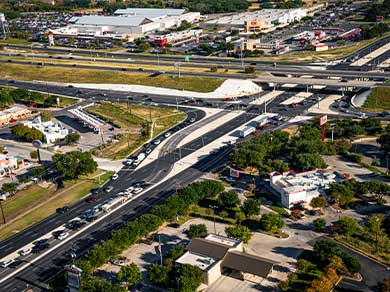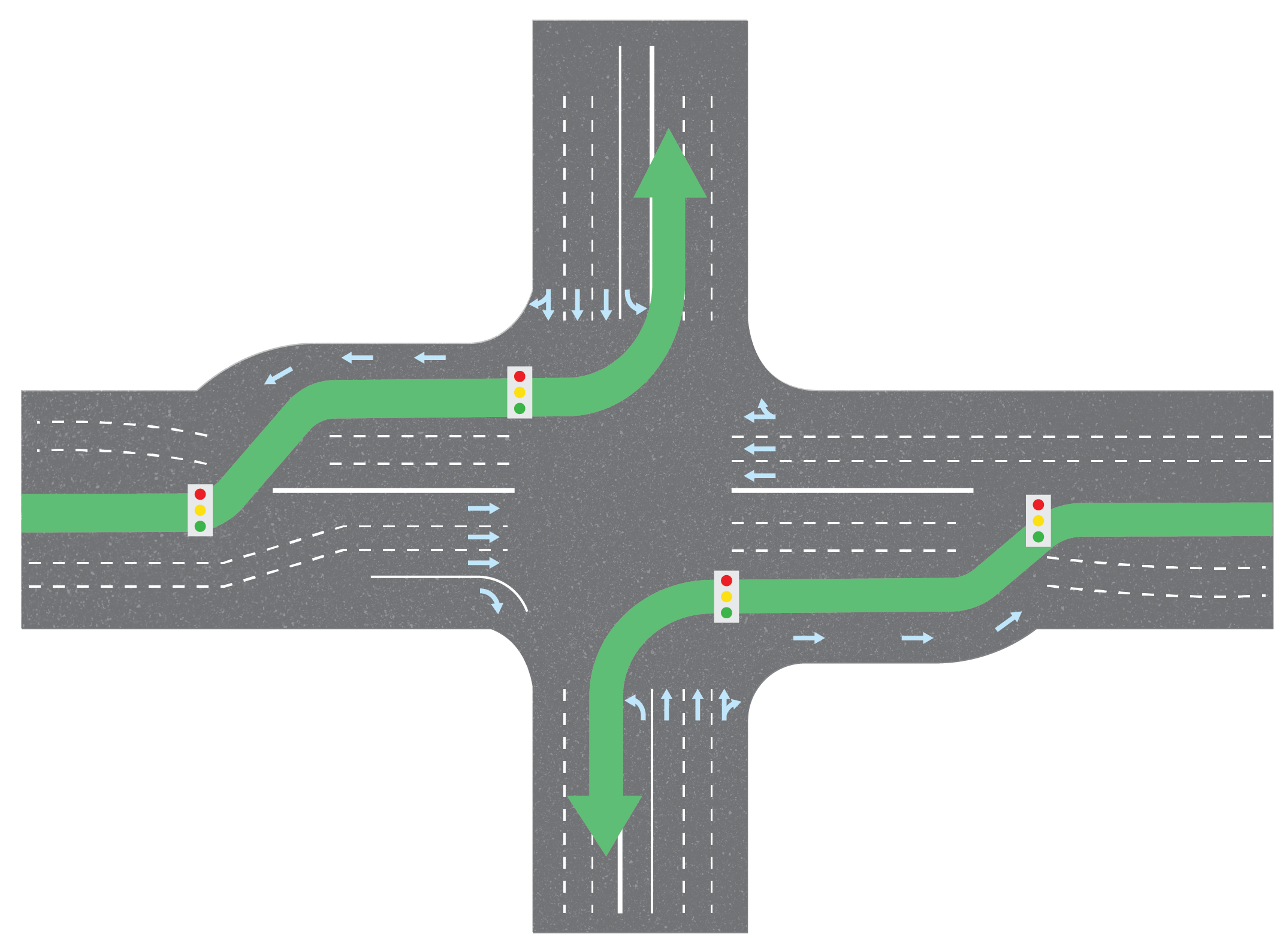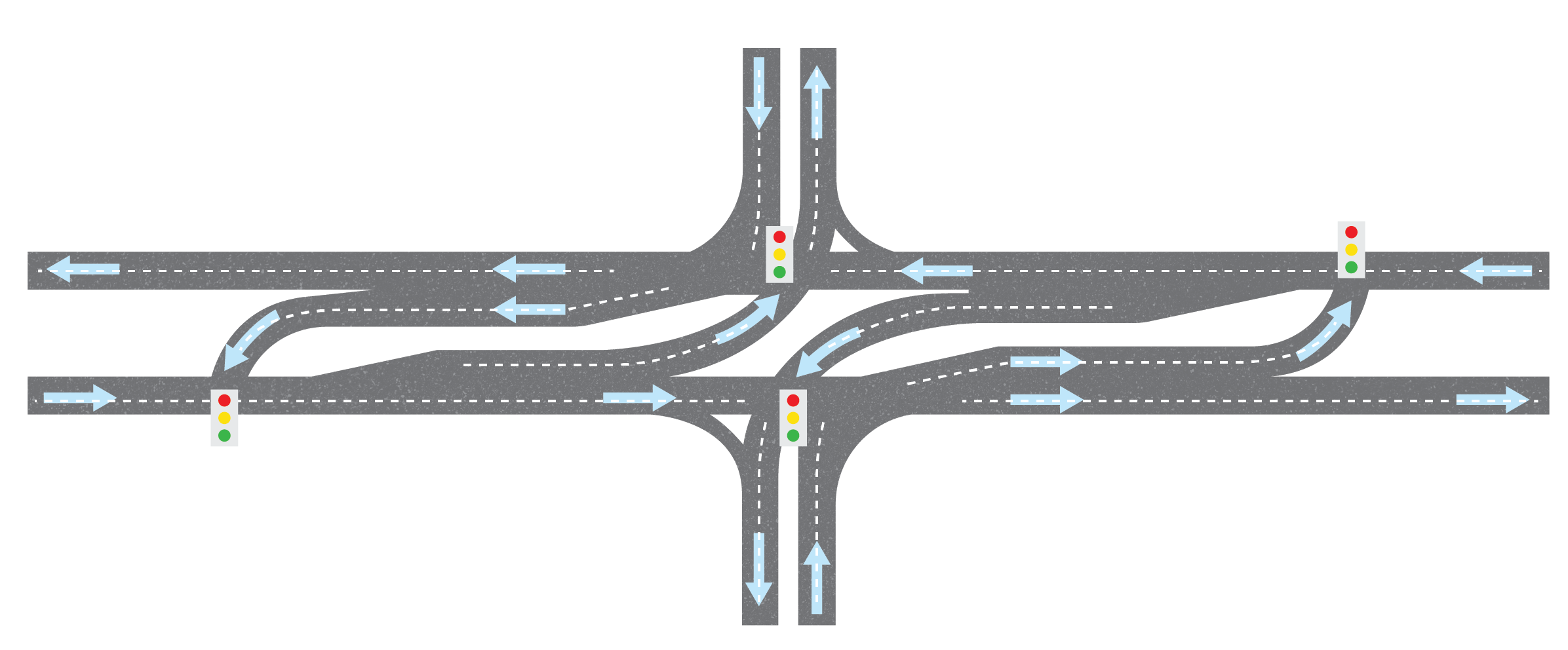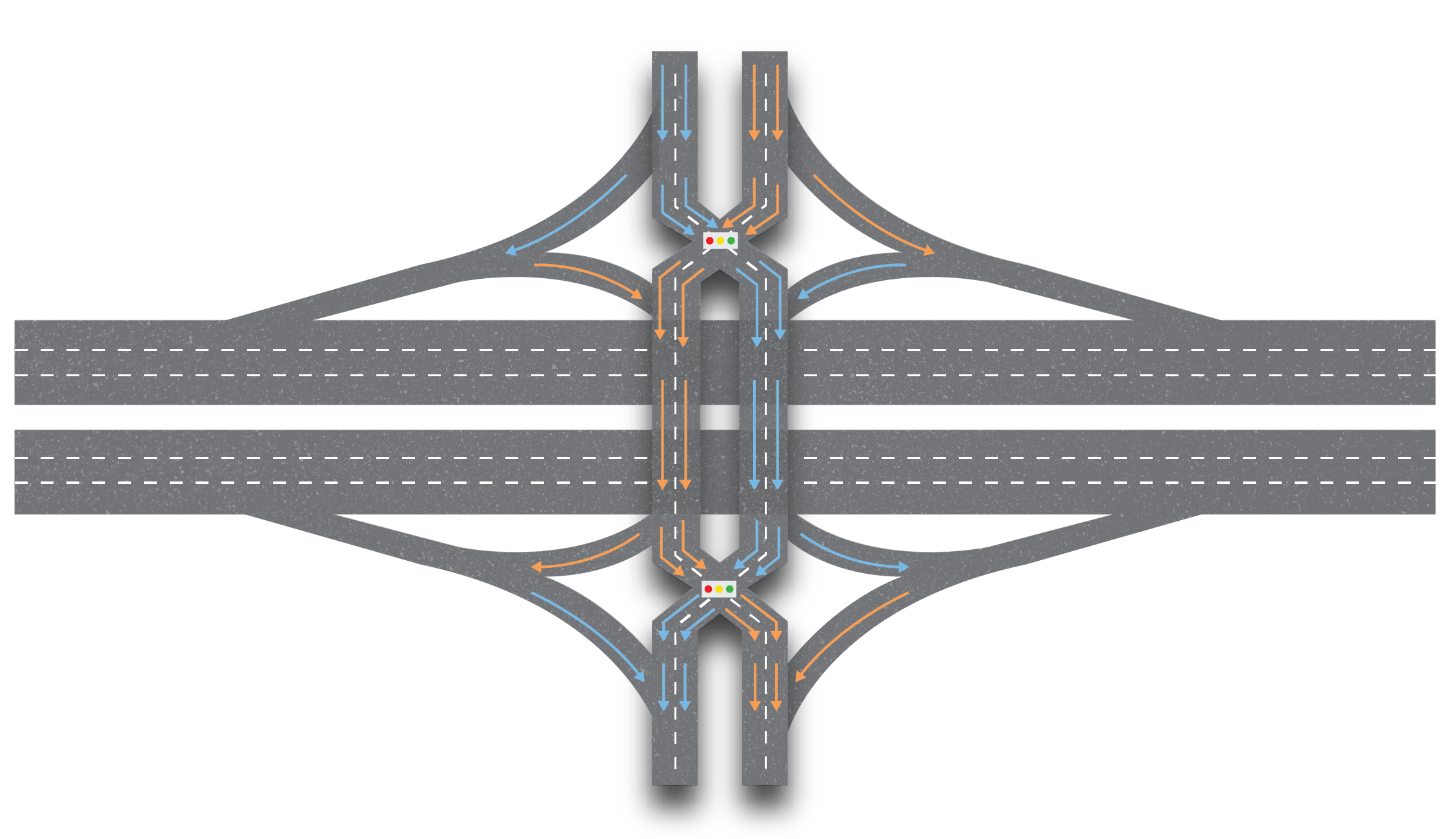
“The traditional four-way diamond interchange is perhaps the most inefficient invention known to humanity,” asserts Gilmer Gaston, P.E., PTOE, Senior Vice President – Transportation for Pape-Dawson Engineers, LLC. Who hasn’t thought THAT while waiting at a red light that seems to last forever? But few of us are in the position to truly know it like Gilmer. Or to do something about it.
Gilmer and his team are part of a quiet revolution in American terrestrial transportation, one that has the promise of transforming your driving experience one intersection at a time.
The idea, explains Gilmer, is that most wasted driving time is spent waiting for a traffic signal to change. New intersection designs can decrease the wait time while preserving the safety of drivers, pedestrians, and bikers. Gilmer’s team is helping educate municipalities about these options and designing intersections that will save years of motorists’ time on the road.
“The main time-waster is the left turn, especially coming off a highway or busy street,” Gilmer says. A protected left turn keeps drivers safe, but relies on an inefficient sequence of turn-taking. “When we can get more directions of travel moving simultaneously—and still safely—we keep the traffic flowing and have less wasted time.”
Several designs to improve traffic efficiency at intersections and interchanges focus on making the left turn both safer and easier:
Displaced Left Turn (DLT). A DLT (also known as a Continuous Flow Intersection, or CFI) moves left-turning traffic across the roadway to the left side of the road prior to the turn. Studies of DLT operational performance have shown that these intersections can reduce delays by 35 to 48%, and may increase intersection capacity up to 75%. In the San Antonio area, Gilmer’s team worked on the DLT at Loop 1604 and Bandera Road that reduced injury accidents by 47% and overall crashes at the intersection by 40%.


Restricted Crossing U-Turn (RCUT). An RCUT replaces a protected left turn with a right turn, followed by a U-turn. Although left-turners may go slightly out of their way, the entire experience is faster and safer overall. Traffic engineers have seen a 20% reduction in travel time and 50% reduction in collisions with RCUTs compared to traditional intersections. San Antonio drivers can find RCUTs in several locations around town. Gilmer’s team brought the first RCUTs to Texas on US 281, Loop 1604, and SH 71 to provide higher capacity throughput for roadways located at the end of freeways.
Diverging Diamond Interchange (DDI). Typically found on a highway overpass, a DDI reroutes all smaller-street traffic to the left side of the roadway for safe and efficient left turns, then switches it back to the right after clearing the major highway. Traffic signals direct vehicles and keep the flow intuitive. A DDI halves the number of potential conflict points between vehicles, which prevents accidents. Moreover, slower vehicle speeds mean that when accidents do occur, they are less severe. But impressive efficiencies come, too: the Federal Highway Administration found DDIs reduce delays by 15 to 60% and increase vehicle throughput 10 to 30%.

Another nice benefit: innovative intersections typically come at a lower price tag. They may maintain needed traffic flow without the need for an expensive overpass, or (as in a DDI) they may reduce the size of overpass that’s needed. That means more dollars in taxpayers’ pockets or resources for other improvements. Which of these or other innovative options is best depends on both the geometry of the roadway and its use.
Implementing an innovative intersection can require a shift of mind, Gilmer admits. “Everyone’s used to the standard, wait-your-turn intersection. Cutting across traffic to make a left turn from the left lane can seem alien, even when it’s perfectly safe.” For that reason, public education is important to the project’s success. Part of Gilmer’s job is helping local decision-makers understand the benefits and costs of innovative intersections.
As a project progresses, drivers will need to know that a new intersection functions differently than most. Guide signs and pavement markings can alert drivers to a road pattern that looks a little different than what they are used to. “These innovative intersections may be a little surprising the first time you come to one,” says Gilmer, “but they really are easier to get through.” And after getting used to them, drivers enjoy spending less time stopped at a traffic light.
Pape-Dawson developed the concept, schematic, and PS&E for the Diverging Diamond Interchange that is currently under construction at Blanco Road at Loop 1604.
Across Texas, Gilmer says he sees intersections getting retrofitted with DLTs, RCUTs, DDIs, and similar innovations. New construction, however, provides even greater opportunities for communities to embrace safer, more-efficient transportation from the start.
The next time you’re waiting for the light to change, take comfort knowing that real change—in the form of innovative intersections—is also on the way.
Download the article here: Innovative Intersections: Something to Cheer You Up While You Wait for the Light to Change